★ Curse Not the King
41 minutes ago
Exponential Innovations Everywhere
* * *
Joost Bonsen's Opinions on How Money, Ideas, and Talent can
Enable Health, Wealth, and Happyness for Each plus Achieve Liberty, Prosperity, and Vitality for All and Ultimately Help Us Spread Beyond Our Cradle Planet Earth
"...the largest Lego set the world has ever seen. Developed with the latest web technology in Chrome, Build is a place for everyone to imagine, create and explore building with Lego bricks online. Choose to build on any plot in the world across your laptop, phone, or tablet. Once you’ve created something, publish it on the map, and share it with your friends."Thanks to Frederic Lardinois at TechCrunch for sharing and MIT's Praveen Subramani for spotting!
"Remittances are huge -- about triple the size of foreign aid flows. That’s a big opportunity for development. But much of the research on remittances focuses on why they are primarily spent on consumption, and how governments and NGOs can get people to invest remittances. [...] Remittances are not a windfall like lottery winnings. For many low-income families, they are a return on investment. Migration is one of many financial tools they juggle to smooth income and consumption. Migration often involves a family member moving to access a different labor market, and that household is investing in an asset, bearing up-front costs for uncertain future benefits. Remittances therefore are part of the family’s [ROI]"Fantastically important to study more! See further research.
"If architect Thomas Heatherwick has his way, the River Thames will soon have a new plant-filled pedestrian crossing [spanning] the 1,204 foot-wide river and containing 2 million pounds of soil, giving root to 270 trees, as well as innumerable shrubs, bushes, and flowers. [...] As pedestrians proceed, stately oaks and manicured shrubs will dot the landscape. [...] Structural engineering firm Arup and landscape designer Dan Pearson helped give the concept form, while dealing with the unique technical challenges of a green bridge."



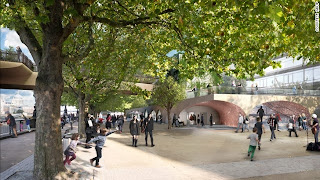



"A new approach to rapid prototyping of functional objects [and] save 3D printing time by automatically substituting sub-volumes with standard building blocks -- in our case Lego bricks. [Things marked] “high-resolution” [are] 3D printed [the rest are Legofied into] instructions that show users how to create everything else from Lego bricks."
"This decrepit collection of concrete [...] Gunkanjima, or ‘Battleship Island,’ is the nickname for Hashima Island, a dense abandoned metropolis once packed with 5,259 people. It started as a small reef, but when coal was discovered there in the 1800s, it was quickly developed and expanded. It was used as a mine from 1887 to 1974 and its concrete architecture was designed to withstand typhoons. The switch from coal to petroleum in Japan led the mine to close."
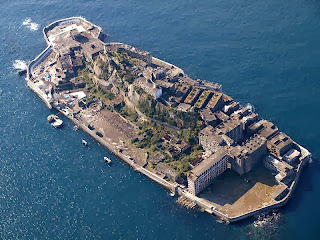


 On Tuesday, 21 January 2014, Joe Hadzima and I kicked off the latest incarnation -- the 25th year (!!) -- of our MIT Nuts & Bolts of New Ventures course over the MIT Independent Activities Period (IAP 2014). Joe gave an overview of the essence of business planning as a process and special guest speaker Stephen Pearse shared how to present venture essentials. My primary topic is Team & Organizational issues, other special guests spotlight Financing, and Operations, and more!
On Tuesday, 21 January 2014, Joe Hadzima and I kicked off the latest incarnation -- the 25th year (!!) -- of our MIT Nuts & Bolts of New Ventures course over the MIT Independent Activities Period (IAP 2014). Joe gave an overview of the essence of business planning as a process and special guest speaker Stephen Pearse shared how to present venture essentials. My primary topic is Team & Organizational issues, other special guests spotlight Financing, and Operations, and more!
"This amazing chart follows the rise and fall -- and in some cases, rise and fall and rise -- of American cities. [...] Most interestingly -- New York City took the number one spot over 200 years ago, and has held onto it ever since. But Los Angeles and San Francisco have come from behind to take the number two and number four spots, respectively. Washington, D.C. has had a wild ride. Note that this chart only looks at rank, not absolute size or growth rate."
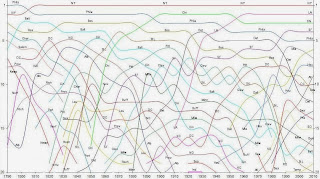
 This nearly 200 year vista is lovely, especially his addition of (a) blue bars = tech growth pulses with start year and duration, and (b) green bars = life expectancy of Americans in years.
This nearly 200 year vista is lovely, especially his addition of (a) blue bars = tech growth pulses with start year and duration, and (b) green bars = life expectancy of Americans in years.
"With the exception of Africa and Middle East, note that the primary difference between regions is not the rate of growth in penetration but rather the delay in adoption. I marked this delay as 4 years between US/EU and Central & Eastern Europe. An additional one year delay to Asia Pacific region and 4 years more to Africa/Middle East adoption. [...] Although 2013 was often cited as the year when smartphones saturated (“everybody that wants one has one”), the total population of users will likely take another decade to reach maximum. The point of inflection in global growth could be expected in 2017. What most observers sensed was the point of inflection in growth in North America and Western Europe. Those regions are 11% of the world’s population."


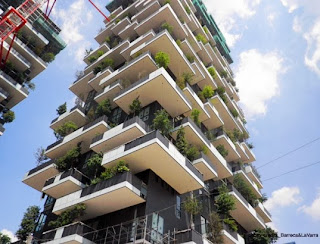
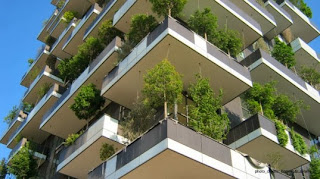
 Plus, Inhabitat had earlier construction pix & comments...
Plus, Inhabitat had earlier construction pix & comments... "The two towers measure 260 feet and 367 feet tall respectively, and together they have the capacity to hold 480 big and medium size trees, 250 small size trees, 11,000 ground-cover plants and 5,000 shrubs (that’s the equivalent of 2.5 acres of forest). The types of trees were chosen based on where they would be positioned on the buildings’ facades and it took over two years of working with botanists to decide which trees would be most appropriate for the buildings and the climate. The plants used in the project were grown specifically for the building, pre-cultivated so that they would gradually acclimate to the conditions they would experience once placed on the building."

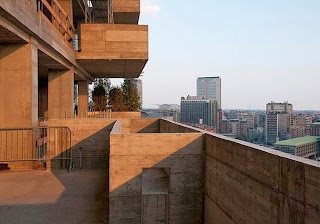

 Starting with Boeri's rendered design visualization...
Starting with Boeri's rendered design visualization... 
 The Globe's Leon Neyfakh asks If urban farming took off, what would Boston look like?
The Globe's Leon Neyfakh asks If urban farming took off, what would Boston look like? "Not every farm looks like a farm any more. A new type of agriculture has been sprouting up in urban centers [...] and Boston’s new ordinance opens the city up to a whole range of ideas about how to integrate food production into city life. [...] On the more inventive side, entrepreneurs are trying to reimagine the traditional mechanics of agriculture so that it might be woven into the built landscape of a dense and busy city. Now that Boston has officially signaled its interest, the possibilities are vast -- maybe Boston can even become home to North America’s first skyscraper farm"Neyfakh goes on to spotlight several specific ideas...

"Took about four hours, with notepad to write the map generator script and photoshop for the legend. I downloaded an .asc (ascii) file [with pop density, about] 30 million records. Converted the huge 200 MB file to a smaller file with this php script in which 30 catogories were used instead of exact numbers. [...] Convert the file to an image. For that I used the PHP GD Library [and script. And finally] Added the legend and some color using photoshop. It's the first time I tried creating a map using programming language only, instead of ArcGIS or tools like that. I was surprised how little lines of code were needed in order to generate such a map. If someone has suggestions for improvement let me know ;-)"
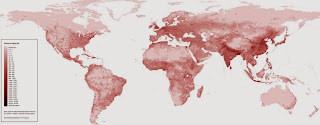
"The multibillion-dollar recycling trade stands as “one of globalisation’s great, green successes”, writes Adam Minter, an American journalist, in "Junkyard Planet".See excerpt at Shanghai Scrap, Minter's blog!
It is also a largely unsung one, as under-appreciated as a rusty bike. The industry turns over as much as $500 billion annually, and employs a huge number of people. [...] Dirty, dangerous, cheap to get into and not without romance, the junk business extracts value from what others see as worthless. Mr Minter is not blind to the grim realities of the industry. [...] But any recrimination over these recycling practices is best directed at the rich world and at the increasingly wealthy Chinese who are beginning to match their wasteful, spendthrift counterparts in the West. The recycling industry squeezes value from used goods, but nothing is 100% recyclable."
" Singapore is one of the most densely populated cities in the world -- but it's also one of the most high-tech when it comes to green city planning. Now, other Asian cities are looking to Singapore for inspiration. [...] Chinese authorities are now beginning to take note and view Singapore as a model in terms of planning and sustainability. [...] Chinese all over the country have been to Singapore... they like what we've done in Singapore and they would like their cities to be developed like Singapore."
"What would your city look like if it went completely dark? Words like majestic, awe-inspiring and magical come to mind -- not as descriptions for the cities themselves, but how some of their most iconic architecture would look as black silhouettes against the bright starry skies of remote places. [...] Cohen doesn’t just superimpose random images of the night sky behind each skyline – the imagery is actually what the sky would look like in each of those precise locations."

 Doesn't include adequate coverage of Chinese empires or Mongol or any of the Native American or African, alas.
Doesn't include adequate coverage of Chinese empires or Mongol or any of the Native American or African, alas.

"Just as the Homebrew Computer Club challenged assumptions that computers had no place in the home, the Homebrew Sensing Project explores the potential for spectrometry, a powerful analytic technique for identifying materials, in your home and neighborhood. We have leveraged the emerging Do-It-Yourself movement and the power of open source hardware and software development to bring spectrometric analysis to a new audience -- non-experts investigating and testing their immediate environment. The Homebrew Sensing Project gives everyone access to simple, affordable tools to collect data in their own backyards, providing the information they need to make environmental health decisions."
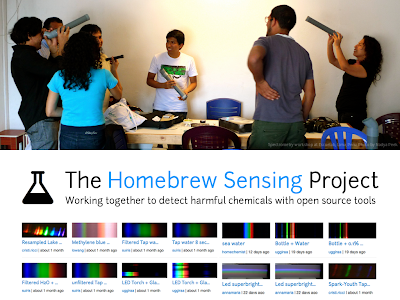
"Increased Internet penetration and use could propel private consumption 13 times higher than current levels. Demographic trends -- including urbanization, rising incomes, and a huge generation of young, tech-savvy Africans -- will drive this growth. [...] The Internet’s greatest impact in Africa is likely to be concentrated in six sectors: financial services, education, health, retail, agriculture, and government. Technology-related productivity gains in these sectors could reach $148 billion to $318 billion by 2025, and large populations stand to benefit as a result."Thanks to Dinfin Mulupi at HWMIIA for spotting this.
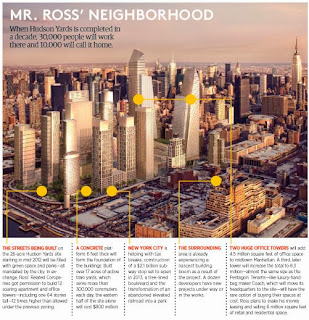 Forbes' Morgan Brennan speaks with Related Cos founder Stephen Ross about the his Hudson Yards development in NYC... P.S. Here's update piece in the DM on The new Manhattan: New York's skyline to be transformed.
Forbes' Morgan Brennan speaks with Related Cos founder Stephen Ross about the his Hudson Yards development in NYC... P.S. Here's update piece in the DM on The new Manhattan: New York's skyline to be transformed.
"It's a kind of robotic hand that looks and feels a lot like a stress ball. Filled with a granular material, in one mode it is squishy enough to envelop an object it's trying to grab. Then, when a vacuum is created inside the ball, the granules get pulled together, solidifying around the object. The unique design enables the gripper to pick up a wide range of different objects, which can weigh up to 20 pounds. Empire has dubbed its product Versaball."
"A film more than a decade in the making by American anthropologist Pegi Vail, looks at the effect of the unplanned or mismanaged growth of the tourism industry in developing countries. Using dramatic examples from different continents, such as the devastating impact of hedonistic full moon beach parties on Thailand's Koh Pha Ngan island, the film is moving and informative, if sometimes elementary. [...] for the uninitiated it serves as a 78-minute, around-the-world guilt trip revealing the frequent callousness of the tourism industry and how it implicates everyone."
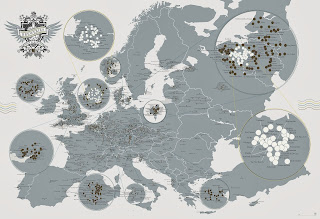
"...a prosperous black New York businessman, drugged by traffickers and sold into slavery, who escaped 12 years later and published a memoir detailing the horror of Louisiana plantation life."
"...whereby millimetre-sized particles were levitated and moved three-dimensionally by localised ultrasonic standing waves, which were generated by ultrasonic phased arrays. Our manipulation system has two original features. One is the direction of the ultrasound beam [...] The other is the manipulation principle."
